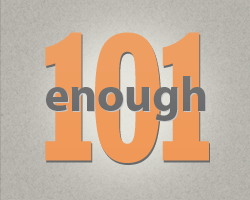
Editor’s Note: This post is a brief history, intended to provide a contextual background for understanding the complex issues that the Enough Project works on. It is part of the series Enough 101.
In May 2010 after intense pressure by U.S. based activist groups, the U.S. Congress passed legislation aimed at ending the Lord’s Resistance Army crisis— the “LRA Disarmament and Northern Uganda Recovery Act,” the most widely supported Africa-specific legislation in recent congressional history. As required by the legislation, President Obama submitted the “Strategy to Support the Disarmament of the LRA” on November 24, 2010. The strategy outlines actions in support of the following four strategic objectives:
- Increase civilian protection;
- Apprehend or remove from the battlefield LRA leader Joseph Kony and his senior commanders;
- Promote the defection, disarmament, demobilization, and reintegration of LRA fighters;
- Increase humanitarian access and provide continued relief to LRA-affected communities.
However, implementation of the strategy by the Obama administration has been slow and continued pressure is necessary.
Today, the LRA has changed drastically since its inception almost 25 years ago. The force is now splintered in many small groups operating hundreds of miles from one another, and as Ugandans defect or are killed the LRA replenishes with Congolese, Central African, and Sudanese fighters. In addition, it is generally fear rather than ideology that keeps Ugandan and foreign fighters in the LRA today, according to interviews with fighters who have defected or escaped.
Crucially, the number of LRA troops is dwindling. About 400 fighters remain operational today, less than half of the number in action two years ago. There has been a slow but steady defection of Ugandans since December 2008.
On October 14, 2011, President Obama announced that he would deploy approximately 100 U.S. military personnel to advise and assist the regional armies in apprehending the LRA senior leadership and bringing them to justice.
Key Numbers about the LRA:
- During its 24-year existence, the LRA has abducted approximately 70,000 civilians, killed tens of thousands, and displaced more than 2.2 million.
- Since 2008, the LRA has killed over 2,400 civilians, abducted 3,400 others, many of whom are children, and displaced over 400,000 people from their homes.
- Based on Enough interviews conducted in 2010 with former LRA fighters, there are about 400 LRA fighters operating in three countries. This number does not include women, men, and children, who are used solely to carry food and other looted materials or serve as sex slaves or “wives.”
- As of November 2010, close to 250 fighters are Ugandans, the other 150 being from Sudan, Congo, and CAR.
Where are they now?
Joseph Kony and many of his top commanders have relocated to the Central African Republic.
According to a 2011 Small Arms Survey publication:
- By September 2011, Kony and his top deputies were believed to have moved from Congo into the Central African Republic, or CAR, possibly to the Zemongo forest near the border with South Sudan’s Western Bahr el Ghazal state. At least one LRA group of about 50 fighters stayed in Congo, based in the Garamba National Park, a former LRA base.
- A small LRA group led by Dominic Ongwen, appears to have moved into Western Bahr el-Ghazal or possibly CAR. The move might be an attempt to join forces with Kony’s troops, who cross frequently into Western Bahr el Ghazal from CAR.
-
On 31 September, Government of South Sudan interior minister Alison Magaya said that the Sudan Armed Forces, or SAF, are training LRA fighters in a camp between
Western Bahr el Ghazal and South Darfur. This statement has been impossible to confirm. Government of Sudan officials have repeatedly denied supporting the LRA.
How to end the LRA:
See our latest paper about the U.S. military advisors and how the nearly 25 year-old LRA crisis can be finally ended. In it, we explain that what is needed for the effort to succeed: capable and committed special forces from Uganda or another African country, greater intelligence support from the U.S., and logistical assistance from European and other countries.
For more information and to see the sources used in this post, check out the Enough Project's Lord’s Resistance Army Pinterest Board.

